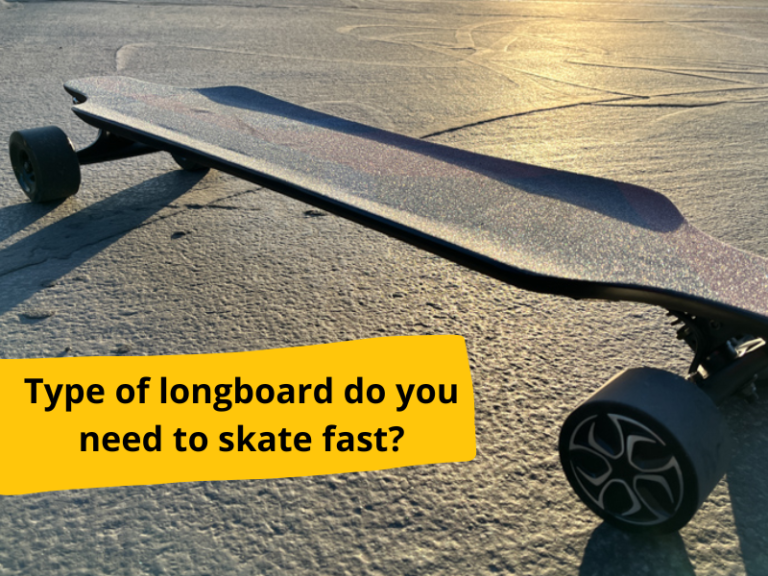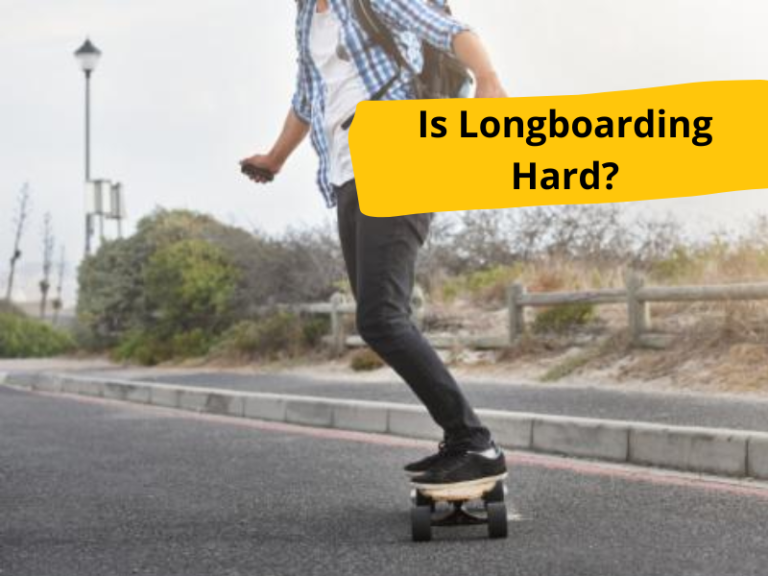What are the Common Longboard Injuries?
The most common longboard injuries include sprains, strains, fractures, contusions, and abrasions. Sprains occur when ligaments are stretched or torn beyond their normal range of motion.
Strains occur when the muscles are overworked or strained. Fractures involve a break in one or more bones and can be caused by a fall or crash while riding.
Contusions result from blunt force trauma and usually cause swelling and bruising.
Abrasions are scrapes or cuts that can be caused by contact with the ground during a fall.
Other less common but serious injuries include head trauma, spinal cord injuries, and internal organ damage.
Category of Longboarding Injuries
By classifying injuries into two groups (painful injuries and bodily harm), two different sets of behaviours and symptoms emerge. On the other hand, there is a positive connotation of bodily harm that highlights hard work and dedication.
Contrary to the mainstream view that the visible wounds of Long Borders are a sign of their lack of principles and dangerous and irresponsible behaviour, I argue that this type of bodily harm is proudly worn.
The rules Demonstrate continuous training of the long border within the strict framework of the code of conduct, whether stated or not.
Longboard Dancing Injuries
Longboard dancers and freestylers are an exciting generation of people because we love what we do. It doesn’t stop us from doing so much such as rainy day, find parking and the the negative temperature outside.
Last August, I competed in the first longboard dance and freestyle competition at the Pangea ABOUT YOU 2019 Festival in northern Germany. It was a small place, but I was happy to go there with friends from Berlin and to see the other Long Borders I know from all over Europe. These events are fantastic because we share so many memorable moments and memories.
Unfortunately, while warming up, I jumped off the board after some failure and landed strangely on my left foot, causing the outermost bone of my foot to split sharply. Gone. I even heard it when it broke.
The Latest Longboard Injury Statistics
Interestingly, although many reports highlight how dangerous longboarding can be, finding the latest numbers and statistics is nearly impossible. Safety gear sales show that most longboarders wear proper gear while riding.
Here are some of the things we can learn from the different studies:
The number of longboarder deaths in the United States between 2011 and 2015 was 147 and occurred on almost every road.
According to 2017 statistics released by Injury Facts 2017, about half of these injuries occurred in the 14 to 24 age group.
About 20% of all head injuries occur in the head, and the majority of head injuries occur in snowboarders under the age of 10.
A third of injuries affect newcomers, but even experienced skaters are not immune to falls and falls.
Only 5% of longboarding injuries are severe, and car accidents cause most.
It is not the case when driving on the road. Be careful if you ride on the street, paying attention to how you go, what you are wearing, and other vehicles around you
Common Longboard Injuries
Report the most common Longboard injuries, cuts, wounds, sprains, and broken bones. Facial injuries are also prevalent among longboarders, including a broken nose and jaw bones. The most severe damages include head injuries such as hiccups and others.
He reports that he sees 70,000 injured people in hospital emergency departments annually. He urges longboarding parents and young aspiring longboarders to choose where they practice their sport and always wear protective clothing.
Finally, it is crucial to understand that injuries happen all the time. That’s all we can do. According to the NSC reports above, fishing involves many sports that lead to injuries you wouldn’t expect. Although the incidence rate is lower in fishing, golf, and volleyball, there is still a risk of injury.
So it’s essential to understand what longboarding safety stats tell us: wear proper safety gear for longboarding, don’t ride in heavy traffic, learn the basics of stopping before depending on modern terrain, and stay in good physical condition.
Longboard Safety
A longboard is a popular pastime among children and adolescents. In recent years, longboard derivatives, such as longboard and mountain board, have also become increasingly popular.

Although a fun and exciting activity, longboarding carries a severe risk of injury. About 70,000 injuries occur each year that require an emergency room visit.
Parents and children can do many things to prevent longboard-related injuries, such as choosing safe places to ride carefully and wearing protective clothing, especially helmets.
Safe routes
The safest way to avoid long boarding injuries is to be smooth and free of debris. Avoid roads near traffic areas while riding on longboard.
Luggage
A properly fitted helmet can reduce the risk of brain injury by up to 80%. Labeling a multisport helmet should be checked to see if it has been tested for longboarding.
Age limit
Children 6-10 years of age need close adult supervision when boarding. However, children overestimate their abilities and skills and lack experience assessing speed, traffic, and other hazards.
A well-fitting helmet
Before you go on your skateboard, empty your pockets of all the hard and fast things and put in your reservations. Essential safety equipment includes:
- Wrist protectors help support the wrist and reduce the risk of fractures in the event of a fall.
- Shoes with closed toes with non-slip soles instead of sandals.
- Springs or fountains can keep debris out of sight.
- Longboards that use tricks use robust equipment.
Helmet cover
It is true regardless of your age, experience level, or where your longboard is.
A suitable helmet:
The dish is worn on the head along the bottom parallel to the ground.
When you shake your head, you are not moving in any direction.
safe environment
Children are at greater risk of injury when near traffic or in areas where they can be struck by motor vehicles, bicycles, pedestrians, or other obstacles.
To improve longboarding safety, many communities are offering supervised longboard parks. While these playpens may be safe from the dangers of traffic and pedestrians, they often consist of more modern terrain and are not recommended for newborns.
Avoid longboarding on uneven surfaces. Always protect the area before your longboard, and inspect surface cracks, rocks, and other debris.
- You don’t have allowed using household longboard ramps.
- Don’t use your longboard in rainy weather.
- Avoid crowded lanes or longboarding in the dark.
- If the car slows down, stops, or turns suddenly, you could fall or be thrown into oncoming traffic.
Make sure you have the Right Tools
There are different types of longboards for different riding styles, such as slalom, freestyle, and speed. Some boards are categorized by user weight. Use a standard longboard that suits your skill level and type of riding.
Small balconies are great for beginners as they can easily balance and handle.
First, verify your longboard is in acceptable condition. It would help if you inspected it before each ride. Find issues that need to be fixed, such as:
- Loose, broken, or torn parts
- Wheels with knuckles and cracks
- Seek professional help to repair serious faults.
Pay attention to Technique
Before attempting more difficult tactics, it’s essential to practice and master basic longboarding skills, especially stopping, slowing down, and turning. Other than this:
- Ability to fall safely.
- If you lose your balance, lean on the longboard so you don’t fall.
- Relax and ride.
- Sit back and relax.
- You can sit back and relax while riding continuously..
- Don’t try your hand at longboarding faster than your experience allows or quicker than you’re safe for the environment.
Further Safety Advice
- Take care of other skaters, significantly younger or less skilled. Turn on ramps or other equipment.
- Do not use headphones when boarding.
- Never place more than one person on a longboard.
- Longboarding accidents happen, so you always need to know what to do in an emergency.
Longboarders are More at Risk of Injury than Skateboarders
A new study shows that people who skateboard using a longboard type have a higher risk of serious injury than those who use a regular skateboard.
The study included data from 824 people (average age 19) who were treated for a longboard or skateboard-related injuries at a Utah trauma center between 2006 and 2011, researchers said today at a November 5 public health research meeting.
More than half, or 57.5%, were injured by longboarding – which uses a more extended and broader board than skateboarding – while 42.5% were injured by skateboarding.
Introduce those that may increase the risk of injury. Young University of Provo, Utah. Some types of longboarding usually involve descending or building around obstacles.
Longboarders may also gain more speed and may be less likely to wear a helmet than skateboarders (the desire for “freedom/air in the hair”), Thiggerson said.
Tigers said doctors treating long residents should be more suspicious than ever of a patient’s head injuries and should consider a brain scan.
Public health campaigns that encourage helmet wearing could significantly reduce brain injuries and brain injuries if they attract longboarders.
Said by Tigers.
Another study presented at the meeting found that approximately 68,100 children between the ages of 5 and 19 visit the emergency department each year for skateboard-related injuries.
Summary
Like skateboards, longboards, a unique variation of the former, have grown in popularity in recent years. Although there is considerable research on skateboarding and the accompanying injury patterns and demographics, there is a significant lack of data on longboarding.
In this study, we found distinct variations in population statistics and injury patterns between the two groups, with long-boarders demonstrating a growing trend of life-changing or life-threatening injuries. It is widely accepted that many serious injuries, especially head injuries, can be easily prevented with proper helmet wear and education.
The difference between longboarding and skateboarding on a date for emergency medicine practitioners can help guide a patient’s workup. Although it may be challenging to ignore TBI’s signs and symptoms medically, our data suggest maintaining a higher than average index of suspicion when caring for a longboard injured patient.
Needed, which reaches a low point for neuroimaging studies. The future development of longboard-specific electronic code could widen the gap between the two games. Campaigns promoting helmet use related to skateboarders and longboarders can significantly reduce head injuries and broken heads when tailored to the longboard population.
More Related FAQS
What hurts you the most during longboarding?
Today I twisted my ankle during free riding, which is quite swollen. I was lucky that my roommate was there to give me half a mile back home. I’ll go to the doctor tomorrow if it doesn’t get better.
What rules and treatments are applied in the most common scenario?
Although the British Columbia Motor Vehicle Act does not explicitly address longboarders or even skateboarders, the general rules that apply to all pedestrians and motor vehicle operators may also apply to longboarders and skateboarders.
Who suffers the most from longboarding?
Women account for 18.8% of all longboard injuries, while women account for only 10.7% of skateboard injuries. Great! It is not surprising that women ride longboards more often than skateboarders.
Is it legal to ride a longboard on the road?
Bikes and longboards are not equal. Longboarding on the sidewalk is legal but illegal on the road. Although running a longboard on the street is unlawful, the police rarely enforce it. At most, you may receive a warning.
How many people die from longboarding and skateboarding?
It is moderate and incorporates both skateboarding and longboarding. I accomplished locating any allocation in the notice, so who understands which one is better? I suspect that the longboard can do some severe damage as it is more likely to cause head and neck injuries.

I am a longboarding enthusiast and a blogger. On this blog, I share tips, tricks, and advice based on my experience. I am dedicated to helping newbies improve their skills and enjoy this fun activity to the fullest.
Disclosure:This post may contain affiliate links. If you click on a link and make a purchase, we may earn a commission at no additional cost to you. Learn more.







